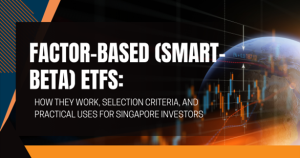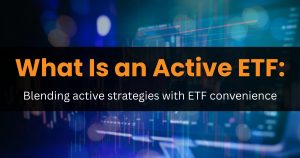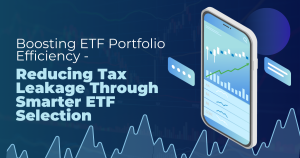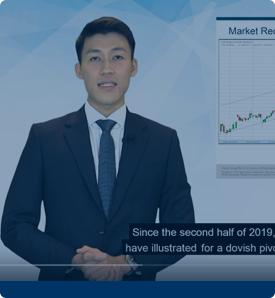ETF Investing for Late Career (above 50 Years Old) September 2, 2024

Introduction to Late Career Investing with ETFs
As you enter your late career, typically after age 50, it’s essential to adjust your investment strategy to prepare for retirement. Even if you have a decade or more of work ahead, now is the time to start transitioning your portfolio to secure your financial future.
Exchange-Traded Funds (ETFs) provide an effective way to balance growth with stability, ensuring that your investments align with your retirement goals. This guide will help you manage your ETF portfolio, emphasising a balanced approach that shifts toward bonds and income as you near retirement.
1. Balancing Growth and Capital Preservation
50-50 Equity and Bond Allocation:
- Aim for an even split between equity and bond investments, providing a balanced approach to growth and stability.
- As you approach retirement, gradually increase your bond allocation to reduce risk and preserve capital (e.g., 30% equity and 70% bonds).
Tactical ETF Suggestions:
- Equity ETFs: Maintain exposure to broad-market equity ETFs like the SPDR STI ETF (ES3), which tracks the Straits Times Index, to capture growth potential from top Singapore-listed companies.
- Bond ETFs: Increase your allocation to bond ETFs, such as the ABF Singapore Bond Index Fund (A35), which provides exposure to high-quality government and quasi-government bonds.
- Income and Stability: Start incorporating dividend-focused ETFs like the Phillip Sing Income ETF to build a future income stream and consider the Lion-Phillip S-REIT ETF for steady real estate income.
2. Planning for Retirement Income
Building Income Streams:
- Prioritise dividend ETFs with a consistent payout history, such as the iShares Asia Pacific Dividend UCITS ETF (IAPD), to establish reliable income streams.
- As you near retirement, increase your bond ETF holdings to provide a stable income source. The iShares Core Global Aggregate Bond UCITS ETF (AGGH) offers diversified exposure to global bonds.
CPF and SRS Optimization:
- Maximise CPF contributions, focusing on voluntary top-ups to your Special Account (SA) to benefit from tax-free growth.
- Use your Supplementary Retirement Scheme (SRS) account for additional tax benefits and invest in bond-focused ETFs that align with your income needs in retirement.
3. Managing Pre-Retirement Risks
Healthcare Preparedness:
- Allocate part of your portfolio to healthcare sector ETFs, such as the iShares Global Healthcare ETF (IXJ), to potentially offset future medical costs and benefit from the sector’s growth.
- Secure comprehensive health insurance, including critical illness coverage, to protect against unexpected medical expenses.
Emergency Fund and Liquidity:
- Keep a robust emergency fund separate from your investment portfolio to cover unexpected expenses or career disruptions.
- Maintain a portion of your portfolio in liquid assets, such as money market funds or short-term bond ETFs, to ensure flexibility.
4. Transition Planning
Phased Retirement Considerations:
- If you’re considering phased retirement, adjust your ETF strategy to accommodate part-time work. Consider the SPDR Gold Shares ETF (O87) as a hedge against economic uncertainty during this transition.
- Explore diversified ETFs that for growth while managing volatility, such as the Vanguard S&P500 ETF (VOO), so when you need cash, you would less likely be selling at a fallen price to fund what you needed.
5. Practical Tips and Resources
Regular Portfolio Review:
- Conduct bi-annual reviews of your portfolio to ensure it remains aligned with your retirement timeline and evolving goals.
- Consult a financial advisor to track progress and make necessary adjustments.
Tax Efficiency:
- Understand the tax implications of different ETFs. Plan strategically to minimise tax burdens, especially on dividend income and capital gains.
- Carefully plan CPF and SRS withdrawals to achieve tax-efficient income in retirement, considering withdrawal timing to minimize tax impact.
Estate Planning Basics:
- Begin basic estate planning, integrating your ETF investments into your overall wealth transfer strategy. Simplify your portfolio to ensure easy management by your beneficiaries.
Conclusion:
Securing your financial future is especially critical during your late career. By mindfully balancing growth, income, and capital preservation through ETFs, you can create a portfolio that transitions smoothly into your retirement years. Adjusting your strategy to gradually favor bonds and income-generating assets as you near retirement will help ensure stability and security. Consult a financial professional to tailor your ETF strategy to your unique needs, goals, and risk tolerance. With thoughtful planning and regular adjustments, your late-career investments can set the stage for a comfortable and fulfilling retirement.
Your next step: save these useful resources under your investment arsenal.
Disclaimer
These commentaries are intended for general circulation. It does not have regard to the specific investment objectives, financial situation and particular needs of any person who may receive this document. Accordingly, no warranty whatsoever is given and no liability whatsoever is accepted for any loss arising whether directly or indirectly as a result of any person acting based on this information. Opinions expressed in these commentaries are subject to change without notice. Investments are subject to investment risks including the possible loss of the principal amount invested. The value of the units and the income from them may fall as well as rise. Past performance figures as well as any projection or forecast used in these commentaries are not necessarily indicative of future or likely performance. Phillip Securities Pte Ltd (PSPL), its directors, connected persons or employees may from time to time have an interest in the financial instruments mentioned in these commentaries. Investors may wish to seek advice from a financial adviser before investing. In the event that investors choose not to seek advice from a financial adviser, they should consider whether the investment is suitable for them.
The information contained in these commentaries has been obtained from public sources which PSPL has no reason to believe are unreliable and any analysis, forecasts, projections, expectations and opinions (collectively the “Research”) contained in these commentaries are based on such information and are expressions of belief only. PSPL has not verified this information and no representation or warranty, express or implied, is made that such information or Research is accurate, complete or verified or should be relied upon as such. Any such information or Research contained in these commentaries are subject to change, and PSPL shall not have any responsibility to maintain the information or Research made available or to supply any corrections, updates or releases in connection therewith. In no event will PSPL be liable for any special, indirect, incidental or consequential damages which may be incurred from the use of the information or Research made available, even if it has been advised of the possibility of such damages. The companies and their employees mentioned in these commentaries cannot be held liable for any errors, inaccuracies and/or omissions howsoever caused. Any opinion or advice herein is made on a general basis and is subject to change without notice. The information provided in these commentaries may contain optimistic statements regarding future events or future financial performance of countries, markets or companies. You must make your own financial assessment of the relevance, accuracy and adequacy of the information provided in these commentaries.
Views and any strategies described in these commentaries may not be suitable for all investors. Opinions expressed herein may differ from the opinions expressed by other units of PSPL or its connected persons and associates. Any reference to or discussion of investment products or commodities in these commentaries is purely for illustrative purposes only and must not be construed as a recommendation, an offer or solicitation for the subscription, purchase or sale of the investment products or commodities mentioned.
About the author
MuMing Yong
ETF Specialist
Phillip Securities Pte Ltd
Mu Ming traded and invested for more than 8 years in various instruments including ETFs, Equities, Unit Trusts, Options, DLC, CFD, and ILP from the US, SG and HK market. He's a believer of personal finance, macroeconomics, and, technical analysis - so much so that he found himself analysing his social media engagement using trend lines and patterns.

 Should You Invest Your Supplementary Retirement Scheme (SRS) Savings?
Should You Invest Your Supplementary Retirement Scheme (SRS) Savings?  Factor-Based (Smart-Beta) ETFs: How They Work, Selection Criteria, and Practical Uses for Singapore Investors
Factor-Based (Smart-Beta) ETFs: How They Work, Selection Criteria, and Practical Uses for Singapore Investors  What is an Active ETF?
What is an Active ETF?  Boosting ETF Portfolio Efficiency: Reducing Tax Leakage Through Smarter ETF Selection
Boosting ETF Portfolio Efficiency: Reducing Tax Leakage Through Smarter ETF Selection 







